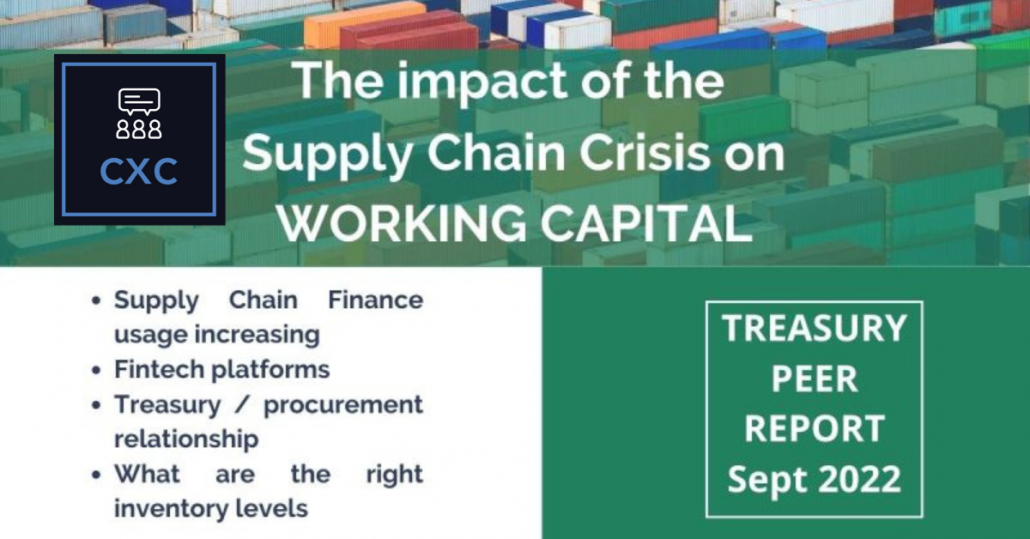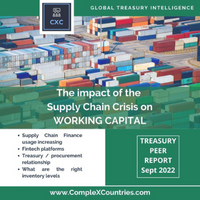The Impact of the Supply Chain Crisis on Working Capital
10-10-2022 | treasuryXL | ComplexCountries | LinkedIn |
Working capital is always a hot topic – but never more so than now. Depending on how you count, most businesses are facing double, triple or more whammies.

The Impact of the Supply Chain Crisis on Working Capital
- Difficulty obtaining supplies, resulting in lost sales, or seasonal goods arriving too late for the season (one participant is in the apparel industry, where this is crucial).
- Manufacturing inventories building up, as products cannot be completed or sold due to one or two missing components – but the rest have been bought and paid for.
- Supply chain management building extra inventory buffers
- Difficulty managing FX hedging programmes, as future cash flows become even harder to predict and forecast
- And, of course, this is all happening against an environment of rising interest rates, which increases the cost of holding inventory
- Margin pressures, due to increased shipping costs – especially given the increased use of emergency shipments, which come outside the agreed rates
- Coupled with inflation and recession risks, there is an increasing concern over distributors’ being left with unsold inventory, with an accompanying credit risk
As always, we had a lively discussion – I encourage you to read the different stories our participants had to tell. They contain lessons for all of us. The main takeaways:
- There is increased use of supply chain financing programmes, both supplier financing and factoring. Suppliers are becoming less reluctant to use them, and several participants have extended these programmes to countries and areas where they were not used before.
- An increasing trend to use fintech platforms for this, rather than single bank programmes – often for capacity reasons, as well as ease of use.
- In many cases, treasury is working with procurement and the suppliers to find a collaborative solution. This can involve paying suppliers early, to help them.
- One participant spoke of a failed implementation of supply chain financing – the lesson being that you need to have the right team.
- In each case, treasury is working with the business to try to find the right trade off between the cost of holding more inventory, and the cost of missed or late sales.
- One participant uses internal factoring to make the best use of cash within the company, before they go to the outside market for funding. This is a cash optimisation tool we often forget.
- One participant’s company manages very large, multi-year fixed price contracts, with many suppliers around the world. This is a particularly challenging environment.
- Again, while treasury tends to view inventory and working capital as an evil, it can also be a competitive advantage, if you can supply when your competitors cannot.
Managing and funding working capital is one of the biggest challenges we face. In an environment such as today’s, it is an area where treasurers can truly add value to the business.










